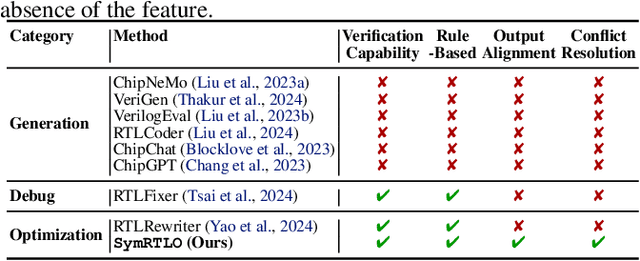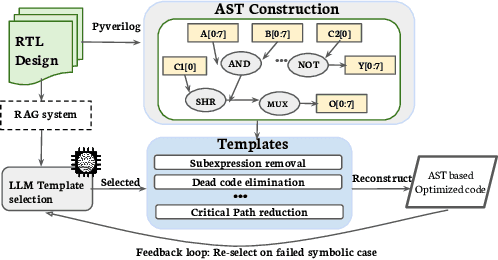Ping Guo
School of Systems Science, Beijing Normal University, Beijing, China
Exploring Polyglot Harmony: On Multilingual Data Allocation for Large Language Models Pretraining
Sep 19, 2025Abstract:Large language models (LLMs) have become integral to a wide range of applications worldwide, driving an unprecedented global demand for effective multilingual capabilities. Central to achieving robust multilingual performance is the strategic allocation of language proportions within training corpora. However, determining optimal language ratios is highly challenging due to intricate cross-lingual interactions and sensitivity to dataset scale. This paper introduces Climb (Cross-Lingual Interaction-aware Multilingual Balancing), a novel framework designed to systematically optimize multilingual data allocation. At its core, Climb introduces a cross-lingual interaction-aware language ratio, explicitly quantifying each language's effective allocation by capturing inter-language dependencies. Leveraging this ratio, Climb proposes a principled two-step optimization procedure--first equalizing marginal benefits across languages, then maximizing the magnitude of the resulting language allocation vectors--significantly simplifying the inherently complex multilingual optimization problem. Extensive experiments confirm that Climb can accurately measure cross-lingual interactions across various multilingual settings. LLMs trained with Climb-derived proportions consistently achieve state-of-the-art multilingual performance, even achieving competitive performance with open-sourced LLMs trained with more tokens.
MuRating: A High Quality Data Selecting Approach to Multilingual Large Language Model Pretraining
Jul 02, 2025Abstract:Data quality is a critical driver of large language model performance, yet existing model-based selection methods focus almost exclusively on English. We introduce MuRating, a scalable framework that transfers high-quality English data-quality signals into a single rater for 17 target languages. MuRating aggregates multiple English "raters" via pairwise comparisons to learn unified document-quality scores,then projects these judgments through translation to train a multilingual evaluator on monolingual, cross-lingual, and parallel text pairs. Applied to web data, MuRating selects balanced subsets of English and multilingual content to pretrain a 1.2 B-parameter LLaMA model. Compared to strong baselines, including QuRater, AskLLM, DCLM and so on, our approach boosts average accuracy on both English benchmarks and multilingual evaluations, with especially large gains on knowledge-intensive tasks. We further analyze translation fidelity, selection biases, and underrepresentation of narrative material, outlining directions for future work.
SymRTLO: Enhancing RTL Code Optimization with LLMs and Neuron-Inspired Symbolic Reasoning
Apr 14, 2025



Abstract:Optimizing Register Transfer Level (RTL) code is crucial for improving the power, performance, and area (PPA) of digital circuits in the early stages of synthesis. Manual rewriting, guided by synthesis feedback, can yield high-quality results but is time-consuming and error-prone. Most existing compiler-based approaches have difficulty handling complex design constraints. Large Language Model (LLM)-based methods have emerged as a promising alternative to address these challenges. However, LLM-based approaches often face difficulties in ensuring alignment between the generated code and the provided prompts. This paper presents SymRTLO, a novel neuron-symbolic RTL optimization framework that seamlessly integrates LLM-based code rewriting with symbolic reasoning techniques. Our method incorporates a retrieval-augmented generation (RAG) system of optimization rules and Abstract Syntax Tree (AST)-based templates, enabling LLM-based rewriting that maintains syntactic correctness while minimizing undesired circuit behaviors. A symbolic module is proposed for analyzing and optimizing finite state machine (FSM) logic, allowing fine-grained state merging and partial specification handling beyond the scope of pattern-based compilers. Furthermore, a fast verification pipeline, combining formal equivalence checks with test-driven validation, further reduces the complexity of verification. Experiments on the RTL-Rewriter benchmark with Synopsys Design Compiler and Yosys show that SymRTLO improves power, performance, and area (PPA) by up to 43.9%, 62.5%, and 51.1%, respectively, compared to the state-of-the-art methods.
MOS-Attack: A Scalable Multi-objective Adversarial Attack Framework
Jan 13, 2025Abstract:Crafting adversarial examples is crucial for evaluating and enhancing the robustness of Deep Neural Networks (DNNs), presenting a challenge equivalent to maximizing a non-differentiable 0-1 loss function. However, existing single objective methods, namely adversarial attacks focus on a surrogate loss function, do not fully harness the benefits of engaging multiple loss functions, as a result of insufficient understanding of their synergistic and conflicting nature. To overcome these limitations, we propose the Multi-Objective Set-based Attack (MOS Attack), a novel adversarial attack framework leveraging multiple loss functions and automatically uncovering their interrelations. The MOS Attack adopts a set-based multi-objective optimization strategy, enabling the incorporation of numerous loss functions without additional parameters. It also automatically mines synergistic patterns among various losses, facilitating the generation of potent adversarial attacks with fewer objectives. Extensive experiments have shown that our MOS Attack outperforms single-objective attacks. Furthermore, by harnessing the identified synergistic patterns, MOS Attack continues to show superior results with a reduced number of loss functions.
CoEvo: Continual Evolution of Symbolic Solutions Using Large Language Models
Dec 25, 2024Abstract:Large Language Models (LLMs) have emerged as transformative tools in artificial intelligence, capable of processing and understanding extensive human knowledge to enhance problem-solving across various domains. This paper explores the potential of LLMs to drive the discovery of symbolic solutions within scientific and engineering disciplines, where such solutions are crucial for advancing theoretical and practical applications. We propose a novel framework that utilizes LLMs in an evolutionary search methodology, augmented by a dynamic knowledge library that integrates and refines insights in an \textit{open-ended manner}. This approach aims to tackle the dual challenges of efficiently navigating complex symbolic representation spaces and leveraging both existing and newly generated knowledge to foster open-ended innovation. By enabling LLMs to interact with and expand upon a knowledge library, we facilitate the continuous generation of novel solutions in diverse forms such as language, code, and mathematical expressions. Our experimental results demonstrate that this method not only enhances the efficiency of searching for symbolic solutions but also supports the ongoing discovery process, akin to human scientific endeavors. This study represents a first effort in conceptualizing the search for symbolic solutions as a lifelong, iterative process, marking a significant step towards harnessing AI in the perpetual pursuit of scientific and engineering breakthroughs. We have open-sourced our code and data, please visit \url{https://github.com/pgg3/CoEvo} for more information.
Approximation of a Pareto Set Segment Using a Linear Model with Sharing Variables
Mar 30, 2024Abstract:In many real-world applications, the Pareto Set (PS) of a continuous multiobjective optimization problem can be a piecewise continuous manifold. A decision maker may want to find a solution set that approximates a small part of the PS and requires the solutions in this set share some similarities. This paper makes a first attempt to address this issue. We first develop a performance metric that considers both optimality and variable sharing. Then we design an algorithm for finding the model that minimizes the metric to meet the user's requirements. Experimental results illustrate that we can obtain a linear model that approximates the mapping from the preference vectors to solutions in a local area well.
Exploring the Adversarial Frontier: Quantifying Robustness via Adversarial Hypervolume
Mar 08, 2024Abstract:The escalating threat of adversarial attacks on deep learning models, particularly in security-critical fields, has underscored the need for robust deep learning systems. Conventional robustness evaluations have relied on adversarial accuracy, which measures a model's performance under a specific perturbation intensity. However, this singular metric does not fully encapsulate the overall resilience of a model against varying degrees of perturbation. To address this gap, we propose a new metric termed adversarial hypervolume, assessing the robustness of deep learning models comprehensively over a range of perturbation intensities from a multi-objective optimization standpoint. This metric allows for an in-depth comparison of defense mechanisms and recognizes the trivial improvements in robustness afforded by less potent defensive strategies. Additionally, we adopt a novel training algorithm that enhances adversarial robustness uniformly across various perturbation intensities, in contrast to methods narrowly focused on optimizing adversarial accuracy. Our extensive empirical studies validate the effectiveness of the adversarial hypervolume metric, demonstrating its ability to reveal subtle differences in robustness that adversarial accuracy overlooks. This research contributes a new measure of robustness and establishes a standard for assessing and benchmarking the resilience of current and future defensive models against adversarial threats.
L-AutoDA: Leveraging Large Language Models for Automated Decision-based Adversarial Attacks
Jan 27, 2024Abstract:In the rapidly evolving field of machine learning, adversarial attacks present a significant challenge to model robustness and security. Decision-based attacks, which only require feedback on the decision of a model rather than detailed probabilities or scores, are particularly insidious and difficult to defend against. This work introduces L-AutoDA (Large Language Model-based Automated Decision-based Adversarial Attacks), a novel approach leveraging the generative capabilities of Large Language Models (LLMs) to automate the design of these attacks. By iteratively interacting with LLMs in an evolutionary framework, L-AutoDA automatically designs competitive attack algorithms efficiently without much human effort. We demonstrate the efficacy of L-AutoDA on CIFAR-10 dataset, showing significant improvements over baseline methods in both success rate and computational efficiency. Our findings underscore the potential of language models as tools for adversarial attack generation and highlight new avenues for the development of robust AI systems.
PuriDefense: Randomized Local Implicit Adversarial Purification for Defending Black-box Query-based Attacks
Jan 19, 2024Abstract:Black-box query-based attacks constitute significant threats to Machine Learning as a Service (MLaaS) systems since they can generate adversarial examples without accessing the target model's architecture and parameters. Traditional defense mechanisms, such as adversarial training, gradient masking, and input transformations, either impose substantial computational costs or compromise the test accuracy of non-adversarial inputs. To address these challenges, we propose an efficient defense mechanism, PuriDefense, that employs random patch-wise purifications with an ensemble of lightweight purification models at a low level of inference cost. These models leverage the local implicit function and rebuild the natural image manifold. Our theoretical analysis suggests that this approach slows down the convergence of query-based attacks by incorporating randomness into purifications. Extensive experiments on CIFAR-10 and ImageNet validate the effectiveness of our proposed purifier-based defense mechanism, demonstrating significant improvements in robustness against query-based attacks.
Adapting Short-Term Transformers for Action Detection in Untrimmed Videos
Dec 04, 2023Abstract:Vision transformer (ViT) has shown high potential in video recognition, owing to its flexible design, adaptable self-attention mechanisms, and the efficacy of masked pre-training. Yet, it still remains unclear how to adapt these pre-trained short-term ViTs for temporal action detection (TAD) in untrimmed videos. The existing works treat them as off-the-shelf feature extractors for each short trimmed snippet without capturing the fine-grained relation among different snippets in a broader temporal context. To mitigate this issue, this paper focuses on designing a new mechanism for adapting these pre-trained ViT models as a unified long-form video transformer to fully unleash its modeling power in capturing inter-snippet relation, while still keeping low computation overhead and memory consumption for efficient TAD. To this end, we design effective cross-snippet propagation modules to gradually exchange short-term video information among different snippets from two levels. For inner-backbone information propagation, we introduce a cross-snippet propagation strategy to enable multi-snippet temporal feature interaction inside the backbone. For post-backbone information propagation, we propose temporal transformer layers for further clip-level modeling. With the plain ViT-B pre-trained with VideoMAE, our end-to-end temporal action detector (ViT-TAD) yields a very competitive performance to previous temporal action detectors, riching up to 69.0 average mAP on THUMOS14, 37.12 average mAP on ActivityNet-1.3 and 17.20 average mAP on FineAction.
 Add to Chrome
Add to Chrome Add to Firefox
Add to Firefox Add to Edge
Add to Edge